
How to Use CH32V003F4P6: Examples, Pinouts, and Specs
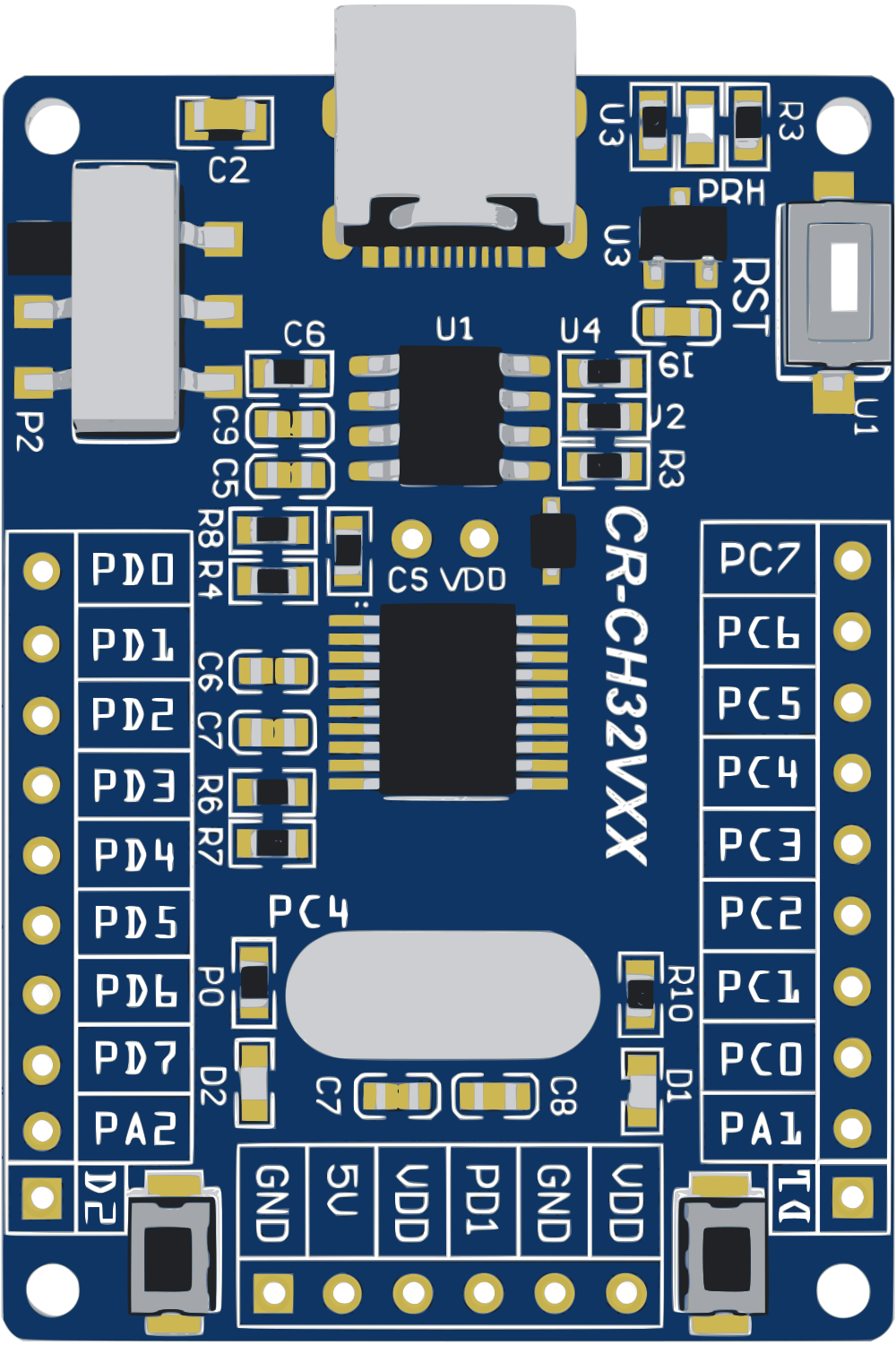
 Design with CH32V003F4P6 in Cirkit Designer
Design with CH32V003F4P6 in Cirkit DesignerIntroduction
The CH32V003F4P6 is a low-power 32-bit microcontroller developed by WCH. It is based on the RISC-V architecture and operates at a maximum clock speed of 48 MHz. This microcontroller is equipped with 4 KB of SRAM and 16 KB of flash memory, making it suitable for a wide range of embedded applications. Its compact design, low power consumption, and versatile I/O interfaces make it ideal for IoT devices, industrial control systems, and consumer electronics.
Explore Projects Built with CH32V003F4P6
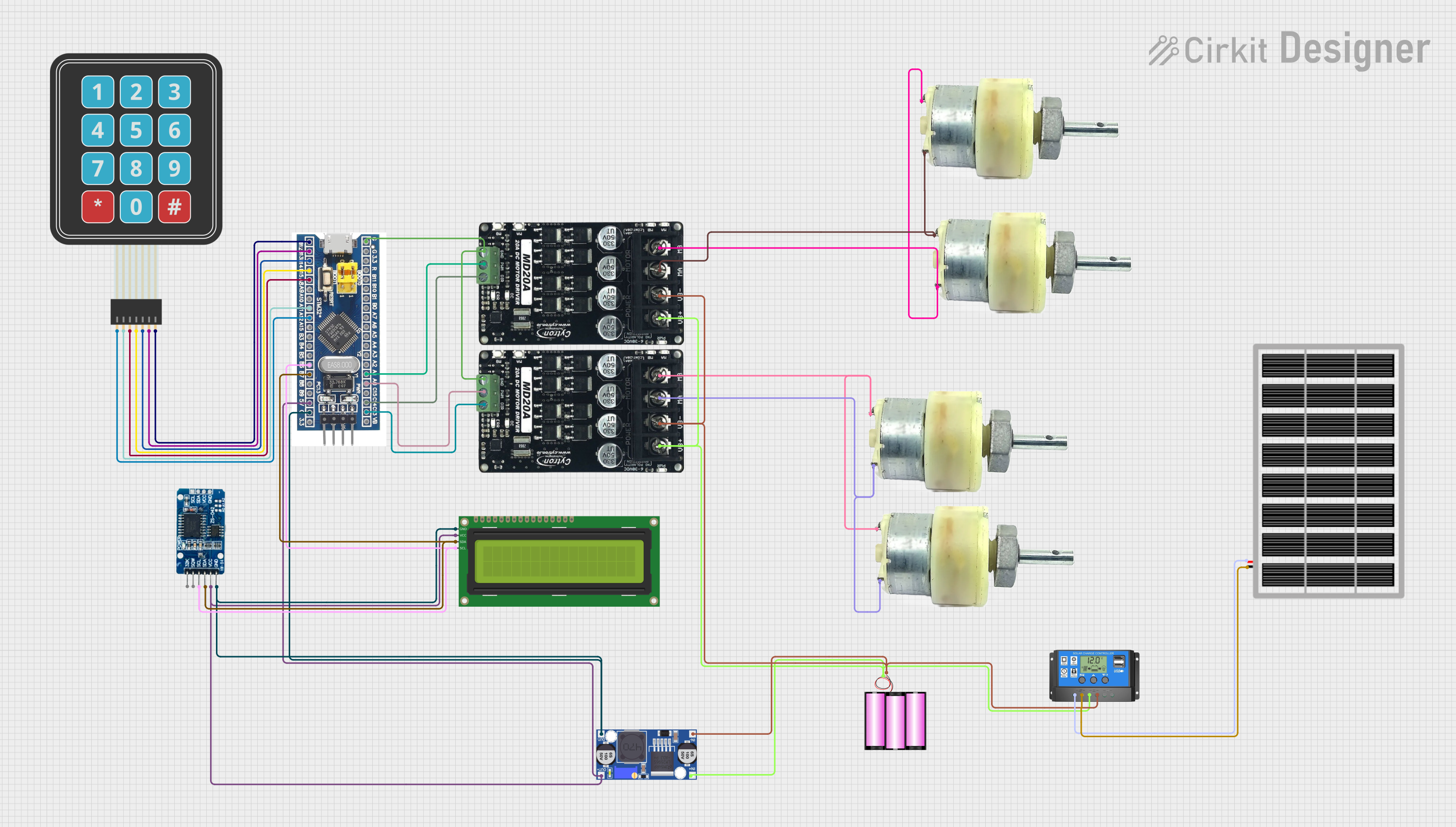
 Open Project in Cirkit Designer
Open Project in Cirkit Designer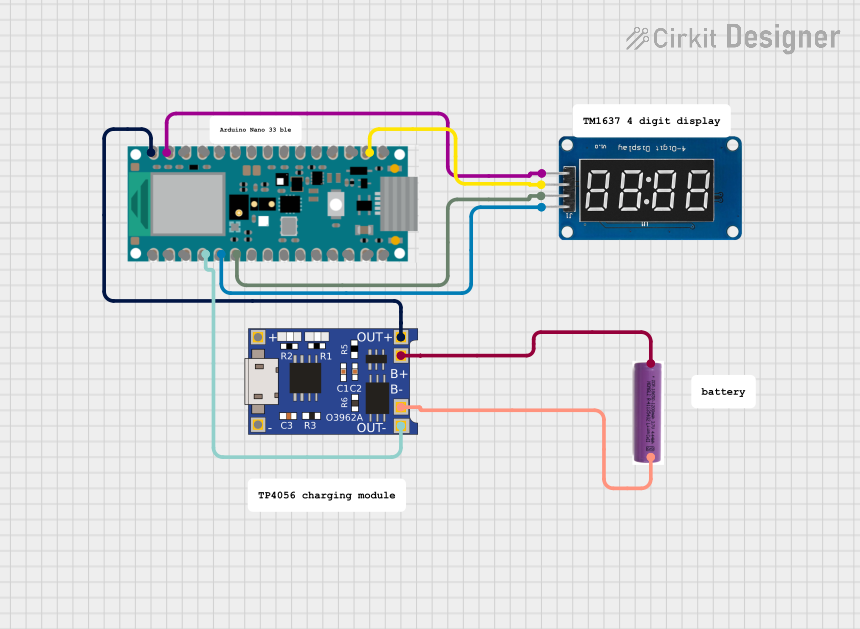
 Open Project in Cirkit Designer
Open Project in Cirkit Designer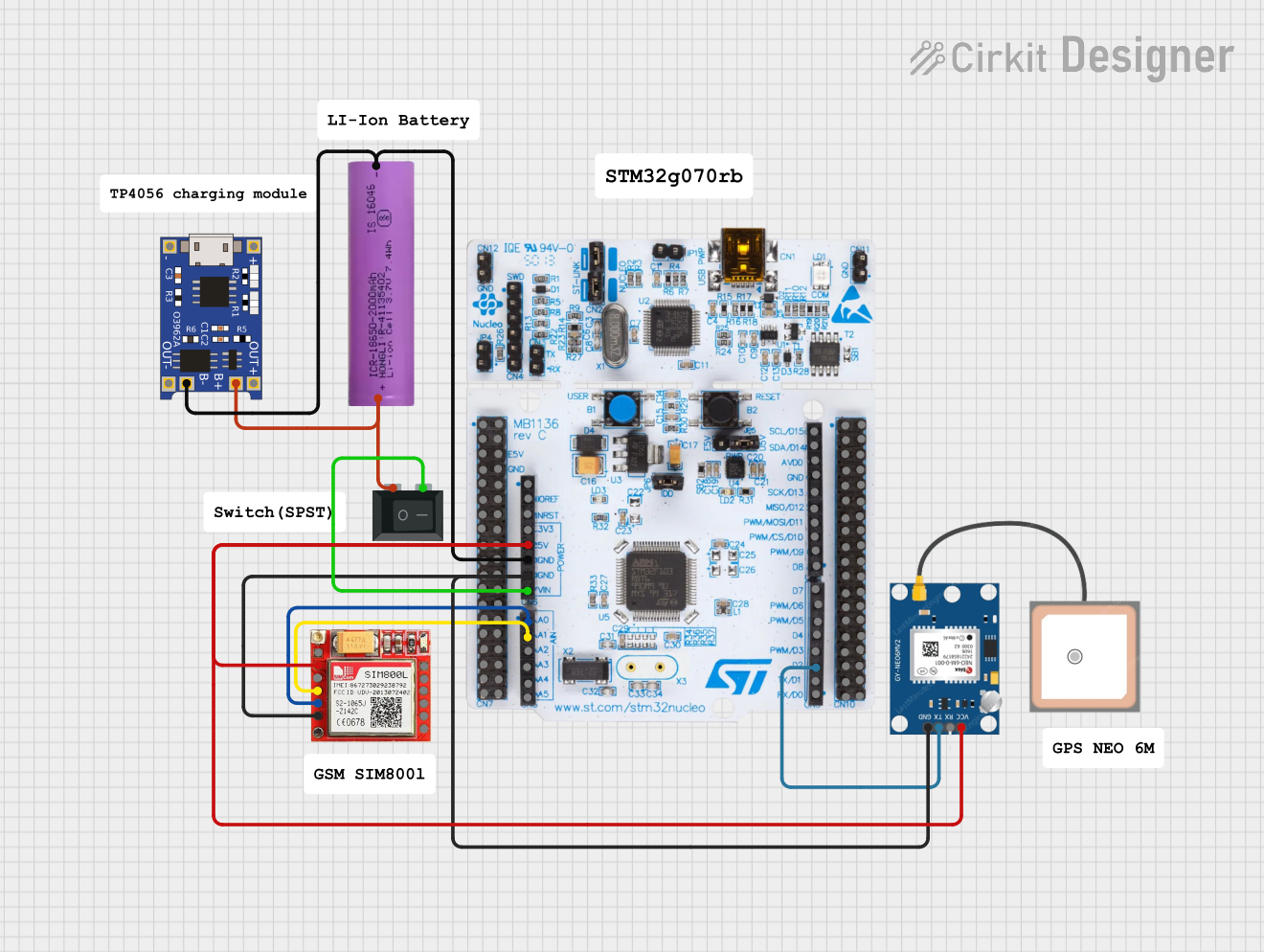
 Open Project in Cirkit Designer
Open Project in Cirkit Designer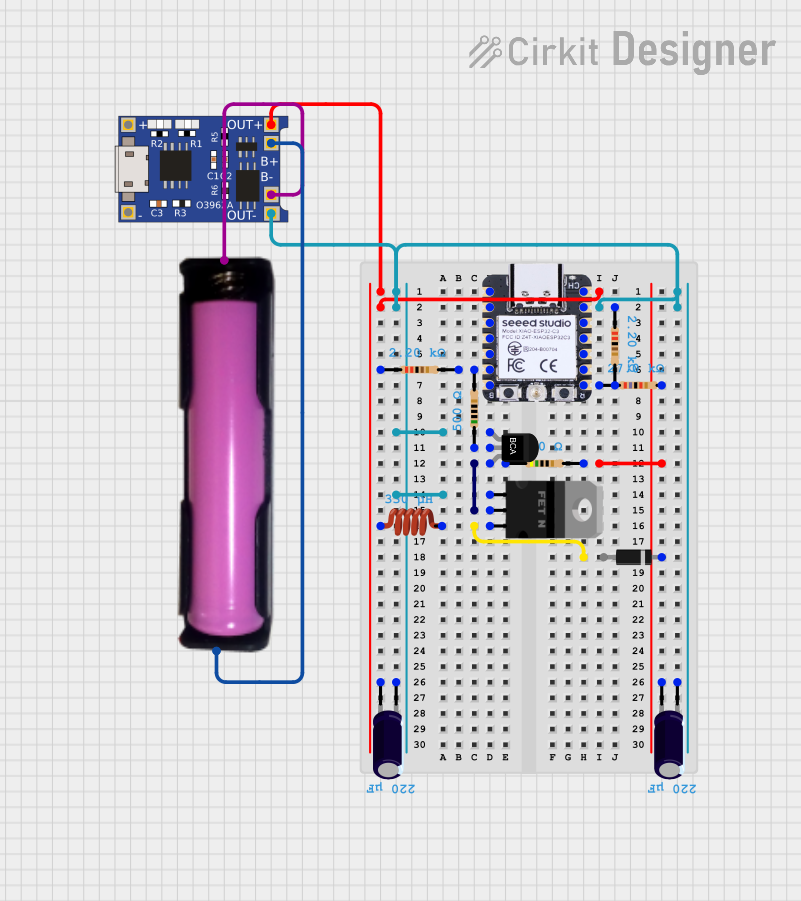
 Open Project in Cirkit Designer
Open Project in Cirkit DesignerExplore Projects Built with CH32V003F4P6

 Open Project in Cirkit Designer
Open Project in Cirkit Designer
 Open Project in Cirkit Designer
Open Project in Cirkit Designer
 Open Project in Cirkit Designer
Open Project in Cirkit Designer
 Open Project in Cirkit Designer
Open Project in Cirkit DesignerCommon Applications
- Internet of Things (IoT) devices
- Home automation systems
- Industrial control and monitoring
- Wearable devices
- Low-power embedded systems
Technical Specifications
Key Technical Details
| Parameter | Specification |
|---|---|
| Architecture | RISC-V |
| Core | 32-bit |
| Maximum Clock Speed | 48 MHz |
| Flash Memory | 16 KB |
| SRAM | 4 KB |
| Operating Voltage | 2.7V to 5.5V |
| GPIO Pins | Up to 18 |
| Communication Interfaces | UART, I²C, SPI |
| Timers | 2 x 16-bit timers |
| ADC | 1 x 10-bit ADC (up to 8 channels) |
| Power Consumption | Low power, suitable for battery use |
| Package Type | SOP-16 |
Pin Configuration and Descriptions
The CH32V003F4P6 is available in a 16-pin SOP package. Below is the pin configuration:
| Pin Number | Pin Name | Function | Description |
|---|---|---|---|
| 1 | VDD | Power Supply | Positive power supply (2.7V to 5.5V) |
| 2 | PA0 | GPIO/ADC Channel 0 | General-purpose I/O or ADC input |
| 3 | PA1 | GPIO/ADC Channel 1 | General-purpose I/O or ADC input |
| 4 | PA2 | GPIO/USART TX | General-purpose I/O or UART transmit |
| 5 | PA3 | GPIO/USART RX | General-purpose I/O or UART receive |
| 6 | PA4 | GPIO/ADC Channel 4 | General-purpose I/O or ADC input |
| 7 | PA5 | GPIO/ADC Channel 5 | General-purpose I/O or ADC input |
| 8 | PA6 | GPIO/SPI SCK | General-purpose I/O or SPI clock |
| 9 | PA7 | GPIO/SPI MISO | General-purpose I/O or SPI MISO |
| 10 | PA8 | GPIO/SPI MOSI | General-purpose I/O or SPI MOSI |
| 11 | PA9 | GPIO/I²C SCL | General-purpose I/O or I²C clock |
| 12 | PA10 | GPIO/I²C SDA | General-purpose I/O or I²C data |
| 13 | PA11 | GPIO | General-purpose I/O |
| 14 | PA12 | GPIO | General-purpose I/O |
| 15 | GND | Ground | Ground connection |
| 16 | NRST | Reset | Active-low reset pin |
Usage Instructions
Using the CH32V003F4P6 in a Circuit
- Power Supply: Connect the VDD pin to a stable power source (2.7V to 5.5V) and the GND pin to ground.
- Reset: Use the NRST pin to reset the microcontroller. This pin should be pulled high during normal operation.
- I/O Configuration: Configure the GPIO pins as input or output based on your application. Unused pins should be left floating or pulled to a known state.
- Communication Interfaces:
- Use PA2 and PA3 for UART communication.
- Use PA6, PA7, and PA8 for SPI communication.
- Use PA9 and PA10 for I²C communication.
- ADC Usage: Connect analog signals to the ADC pins (PA0 to PA7) for analog-to-digital conversion.
Important Considerations
- Ensure the operating voltage is within the specified range to avoid damage to the microcontroller.
- Decouple the power supply with a 0.1 µF capacitor close to the VDD pin to reduce noise.
- Use pull-up or pull-down resistors for unused pins to prevent floating states.
- Follow proper ESD precautions when handling the microcontroller.
Example: Interfacing with Arduino UNO
The CH32V003F4P6 can be programmed and interfaced with an Arduino UNO using UART. Below is an example code snippet for communication:
// Arduino UNO code to communicate with CH32V003F4P6 via UART
void setup() {
Serial.begin(9600); // Initialize UART at 9600 baud rate
Serial.println("Arduino to CH32V003F4P6 Communication Started");
}
void loop() {
// Send data to CH32V003F4P6
Serial.println("Hello CH32V003F4P6!");
delay(1000); // Wait for 1 second
// Check if data is received from CH32V003F4P6
if (Serial.available() > 0) {
String receivedData = Serial.readString();
Serial.print("Received: ");
Serial.println(receivedData);
}
}
Troubleshooting and FAQs
Common Issues and Solutions
Microcontroller Not Powering On:
- Cause: Incorrect power supply voltage.
- Solution: Ensure the VDD pin is supplied with 2.7V to 5.5V and the GND pin is properly connected.
No UART Communication:
- Cause: Incorrect baud rate or wiring.
- Solution: Verify the baud rate settings and ensure TX and RX pins are correctly connected.
ADC Not Working:
- Cause: Improper configuration or noisy input signal.
- Solution: Check the ADC configuration and ensure the input signal is within the ADC range.
Microcontroller Not Resetting:
- Cause: NRST pin not pulled low.
- Solution: Ensure the NRST pin is momentarily pulled low to reset the microcontroller.
FAQs
Q: Can the CH32V003F4P6 operate at 5V?
- A: Yes, the microcontroller supports an operating voltage range of 2.7V to 5.5V.
Q: How many GPIO pins are available?
- A: The CH32V003F4P6 provides up to 18 GPIO pins.
Q: Is the CH32V003F4P6 compatible with Arduino IDE?
- A: While the CH32V003F4P6 is not natively supported by the Arduino IDE, it can be programmed using other RISC-V compatible tools.
Q: What is the maximum clock speed?
- A: The maximum clock speed of the CH32V003F4P6 is 48 MHz.